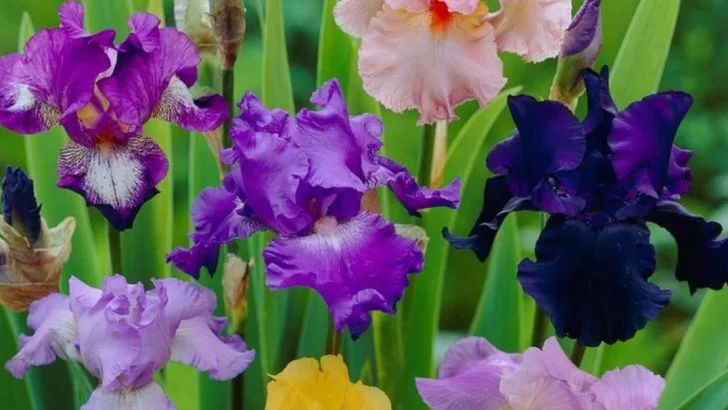Peonies are a garden favorite, known for their lush, romantic blooms and elegant presence. But to truly make them shine, pairing them with the right companion plants can enhance their beauty, extend seasonal interest, and create a balanced, thriving garden.
Whether you’re looking for foliage that contrasts beautifully with peony petals, flowers that bloom alongside them, or plants that provide structure after peonies fade, the right combinations can elevate your landscape.
From delicate perennials to striking shrubs, these plants can help create a harmonious and visually stunning garden. In this article, we highlight 21 breathtaking plants that perfectly complement peonies, ensuring your garden remains vibrant and captivating all season long.
Lavender
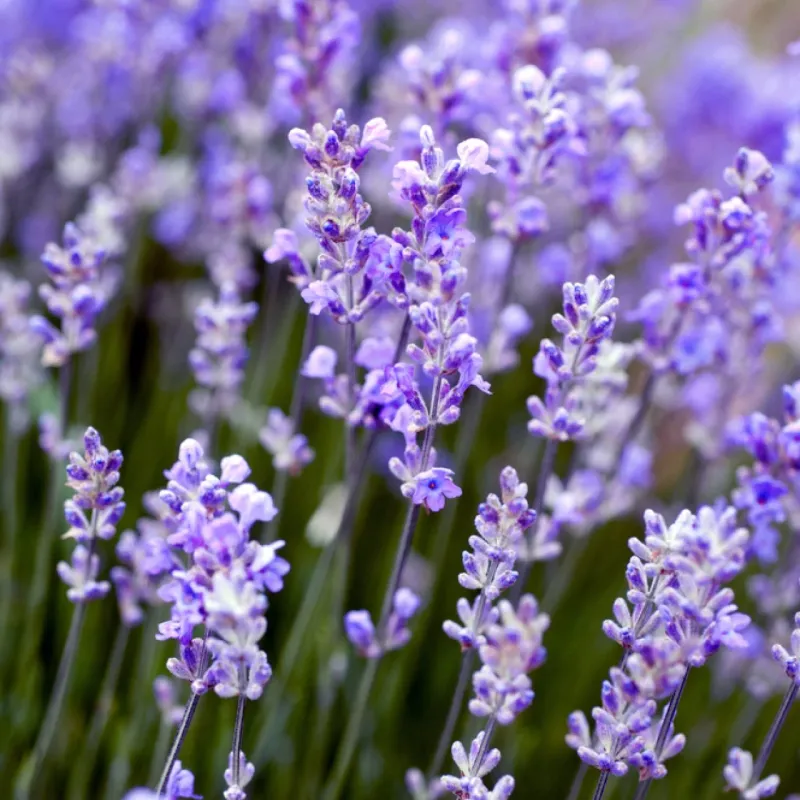
Lavender adds a lovely contrast with its soft purple spikes and gray-green foliage. Its fragrant aroma not only delights but also helps repel garden pests. Planting lavender near peonies can create a romantic, aromatic garden space. The combination of colors and textures offers a pleasing aesthetic that draws the eye and the nose. Lavender’s drought tolerance makes it a practical choice for gardeners looking to conserve water without sacrificing beauty.
Salvia
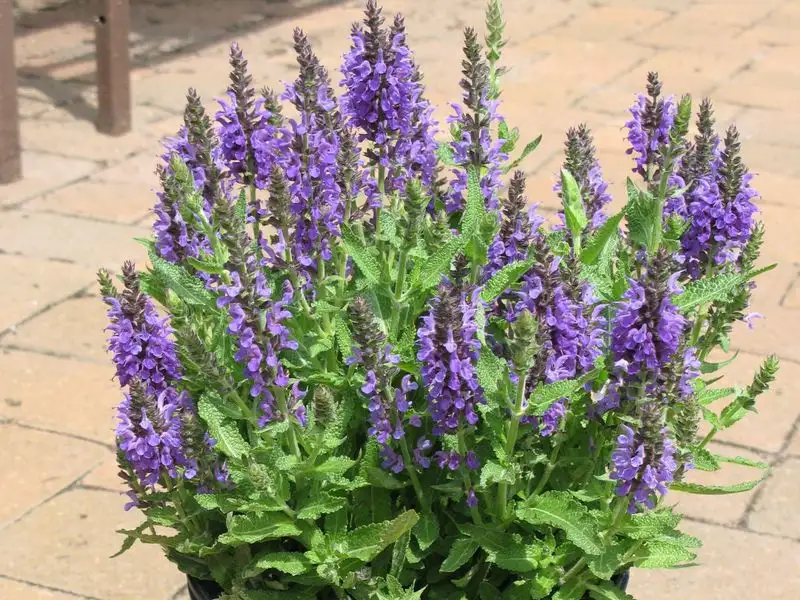
Salvia brings vibrant blues and purples to the garden palette, complementing the rich hues of peonies. Its vertical growth habit adds height and dimension among the more rounded peony blooms. Moreover, salvia is a magnet for pollinators, attracting bees and butterflies. By choosing salvia, gardeners not only enhance visual appeal but also support the ecosystem around them. Its resilience in various climates makes it an easy-to-grow addition to any garden.
Catmint
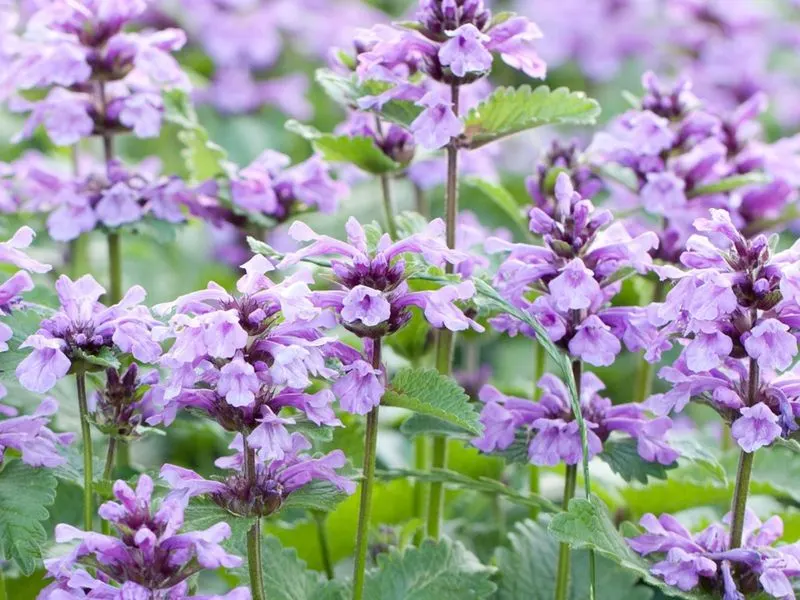
Catmint, with its cascading lavender-blue flowers, offers a soft contrast to peonies’ bold blossoms. The plant’s aromatic foliage adds an extra sensory layer to the garden experience. Known for its tough nature, catmint thrives in many conditions, providing a reliable choice for gardeners. Its long blooming period ensures continuous color, keeping the garden lively throughout the season. Additionally, catmint attracts beneficial insects, promoting a healthy garden ecosystem.
Alliums
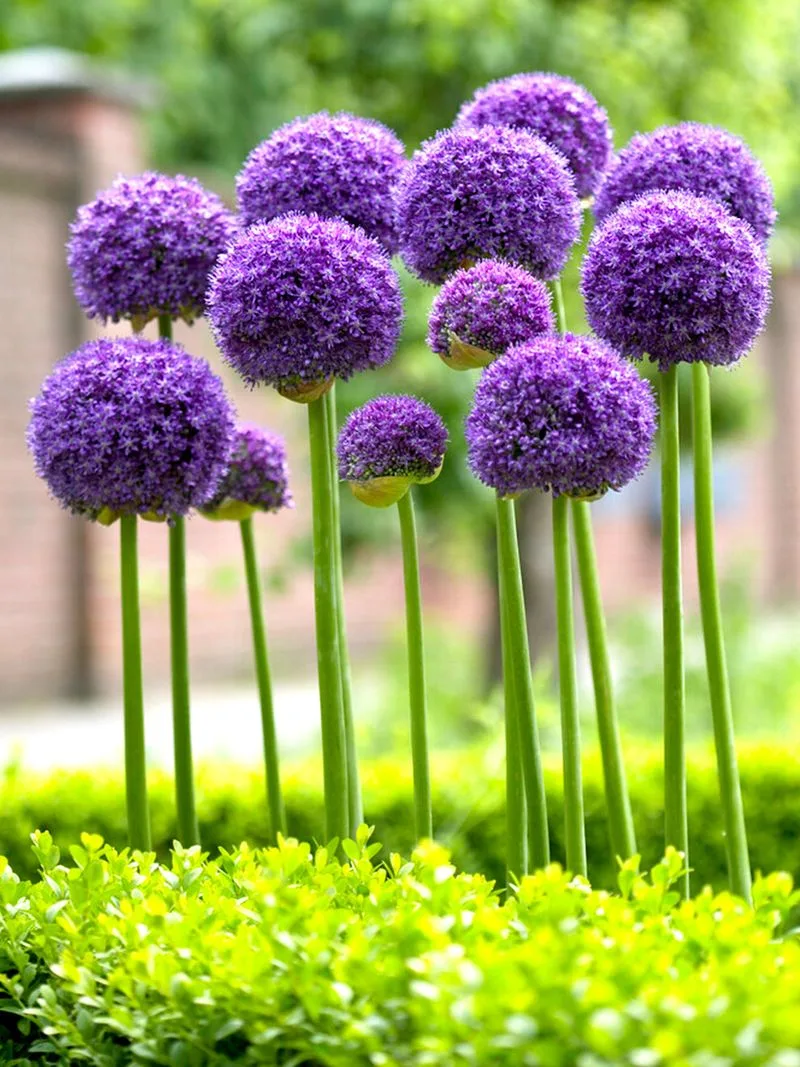
Alliums lend an architectural element with their tall, globular blooms. These purple giants tower majestically, creating an impressive backdrop for peonies. Their structure adds interest and variety, breaking the monotony of similar shapes. Alliums are also known for deterring pests, making them a smart companion plant. Their late spring blooms coincide perfectly with peonies, ensuring a seamless transition of color in the garden.
Irises
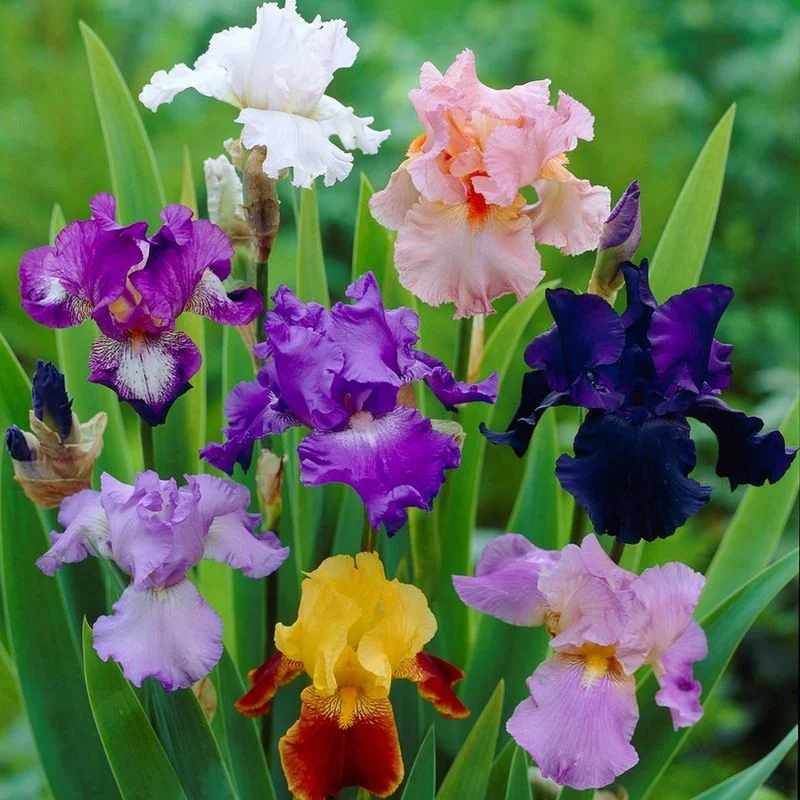
Irises bring a splash of color with their intricate petals and rich hues. Their elegant form contrasts delightfully with the rounded peony flowers. Growing irises alongside peonies can create a layered visual effect in the garden. Irises prefer similar growing conditions, making them a good match. With their early summer blooms, they extend the flowering season, providing continuous beauty and interest.
Daylilies
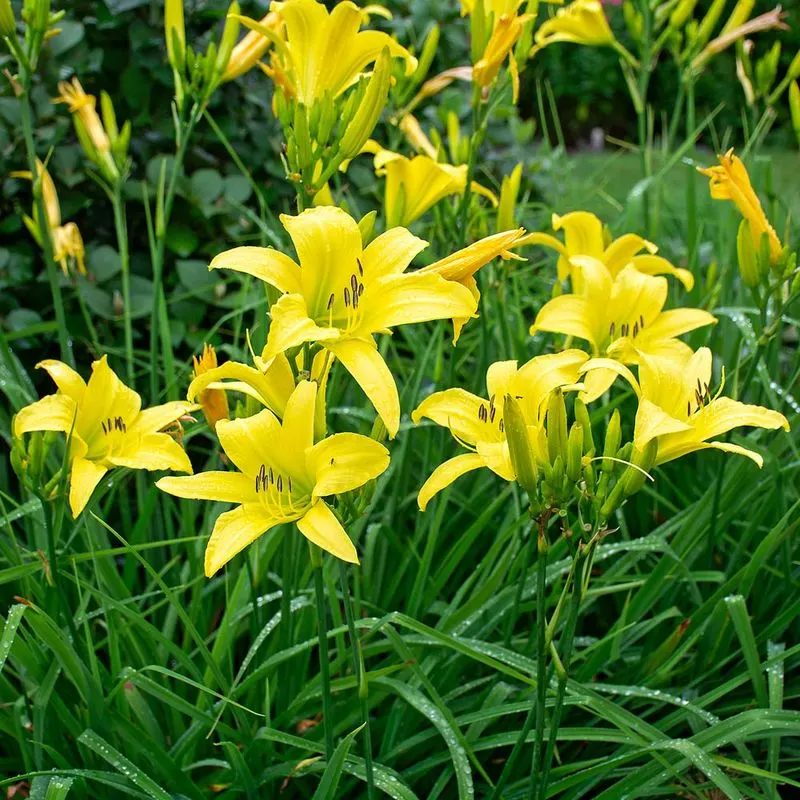
Daylilies are known for their vibrant display and easy-care nature. Their warm hues blend beautifully with peonies, offering a cheerful contrast. Daylilies’ long blooming period ensures color throughout the summer, long after peonies have faded. This perennial’s resilience and adaptability make it a valuable addition for gardeners seeking minimal maintenance. By pairing daylilies with peonies, you ensure a dynamic and enduring garden display.
Phlox

Phlox brings a profusion of color with its dense clusters of flowers. Its upright growth habit provides a vertical element that complements peonies’ bushy form. Phlox’s fragrant blooms draw pollinators, enhancing garden biodiversity. By planting phlox with peonies, you add layers of color and scent that please both the eye and the nose. The plant’s hardiness also makes it an excellent choice for various garden settings.
Astilbe
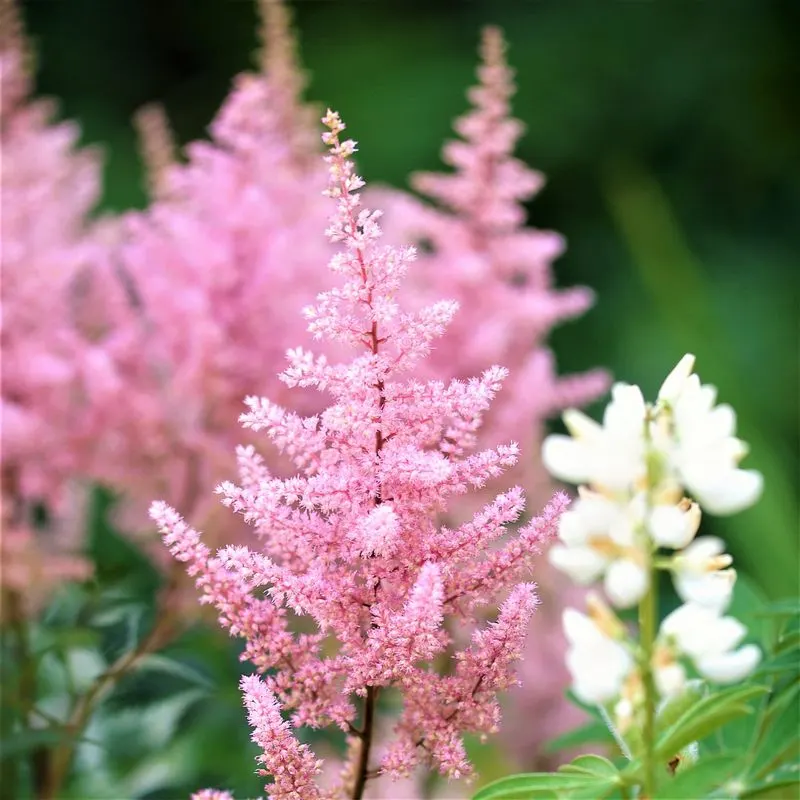
Astilbe offers a delicate, feathery texture that softens the bold presence of peonies. Its plumes of pink, white, or red flowers bring elegance and lightness to the garden. Astilbe thrives in shaded areas, providing options for gardens with less sun. When paired with peonies, it ensures a continuous display of color from spring through summer. Its moisture-loving nature makes it ideal for wetter garden spots.
Hostas
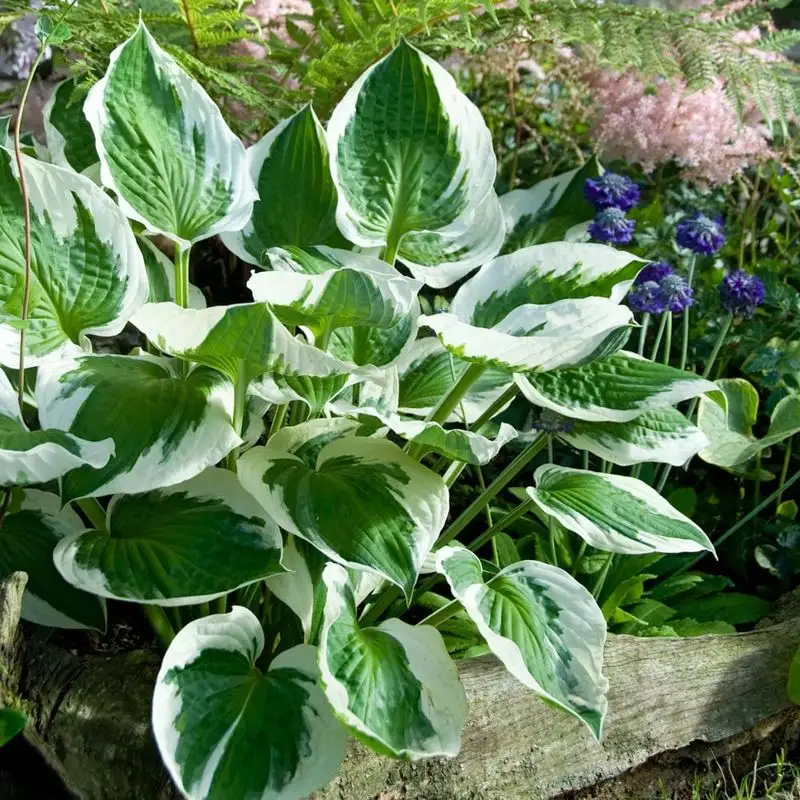
Hostas, with their lush, diverse foliage, offer texture and color to the garden floor. Their leaves create a rich backdrop that highlights peonies’ vibrant blooms. Hostas thrive in shaded areas, making them ideal companions for peonies planted in partial sun. Their varied leaf patterns can match any aesthetic, from bold to subtle. This hardy perennial is easy to care for, making it a top choice for both novice and experienced gardeners.
Bleeding Heart

The Bleeding Heart enchants with its arching stems adorned with heart-shaped flowers. This whimsical plant adds a touch of romance and nostalgia to any garden space. Its early bloom time complements peonies perfectly, ensuring a sequence of enchanting displays. Preferring shaded, moist environments, it thrives in conditions similar to peonies. By pairing them, gardeners can create a serene, enchanting atmosphere that captivates season after season.
Ferns
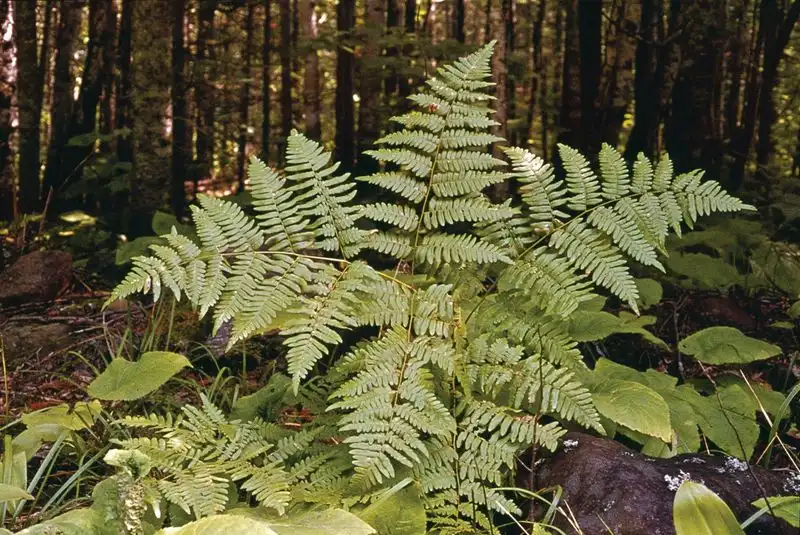
Ferns add a lush, verdant backdrop with their intricate fronds and textures. Their preference for shade makes them ideal companions for peonies in less sunny spots. The contrast between peonies’ bold blooms and ferns’ delicate leaves creates a visually appealing garden. Ferns’ easy-care nature and variety of shapes and sizes provide flexibility in garden design. They help emphasize the beauty of peonies while contributing to a balanced ecosystem.
Lady’s Mantle

Lady’s Mantle offers charm with its scalloped leaves and frothy clusters of yellow flowers. This plant’s soft texture and muted colors provide a gentle contrast to peonies’ dramatic presence. Its ability to hold dew adds a magical quality to morning garden views. Lady’s Mantle is robust and adaptable, thriving in a variety of conditions. Its understated elegance makes it a versatile choice, enhancing peonies while maintaining its unique appeal.
Clematis
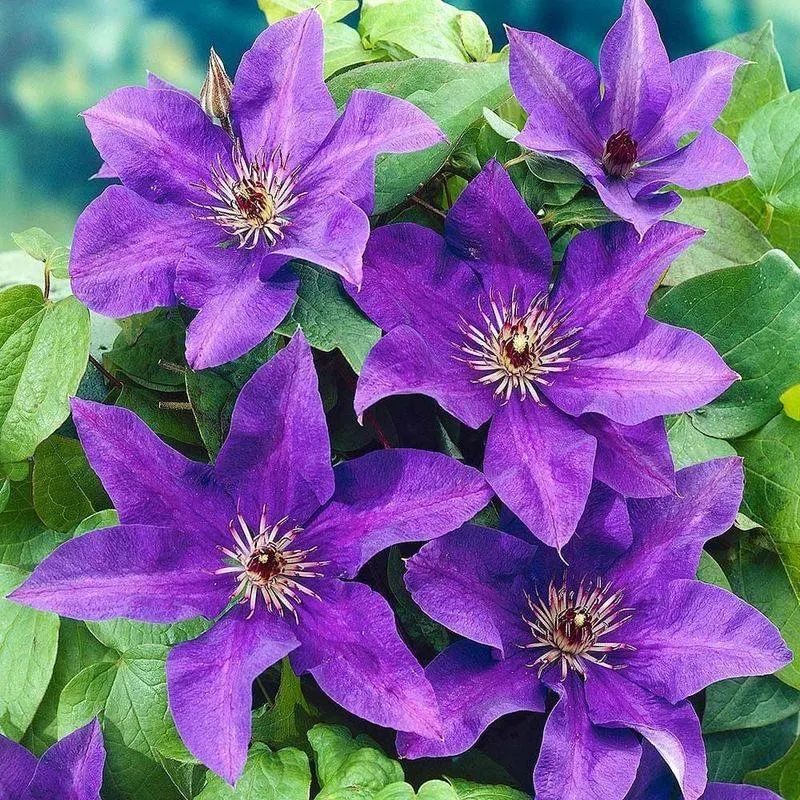
Clematis introduces vertical interest with its climbing habit and large, star-shaped flowers. This vine’s vibrant blooms can overshadow fences or trellises, complementing the bushy nature of peonies below. With varieties that bloom throughout the growing season, clematis ensures continuous color in the garden. It thrives in similar soil conditions, making it an easy, compatible partner for peonies. Together, they create a layered, dynamic landscape.
Columbine

Columbine graces the garden with its unique, spurred blossoms and delicate foliage. Its pastel colors provide a soft, complementary accent to peonies’ bold blooms. The plant’s preference for dappled shade makes it a suitable partner for peonies in similar conditions. Columbine attracts pollinators, enhancing garden biodiversity. Its whimsical appearance adds a touch of fairy-tale charm, creating an inviting and magical garden setting.
Foxgloves
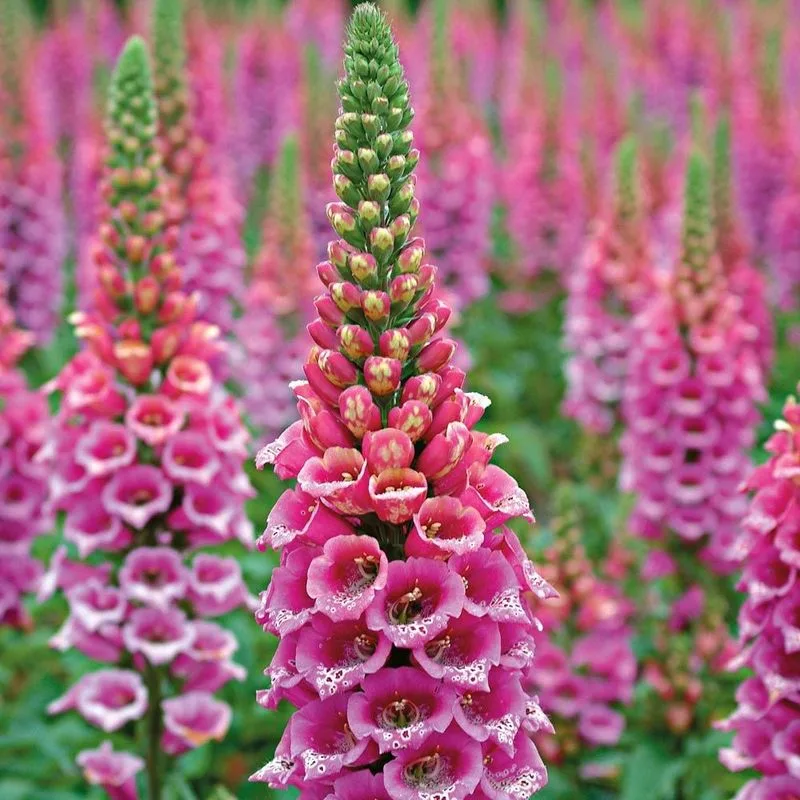
Foxgloves bring drama with their tall spires and tubular flowers. Their striking presence adds vertical interest among peonies’ rounded shapes. These biennials are a favorite for their ability to attract hummingbirds, adding movement to the garden. Foxgloves thrive in well-drained soil, sharing similar conditions with peonies. Their towering blooms provide a dramatic backdrop, enhancing the visual appeal and diversity of any garden.
Coral Bells
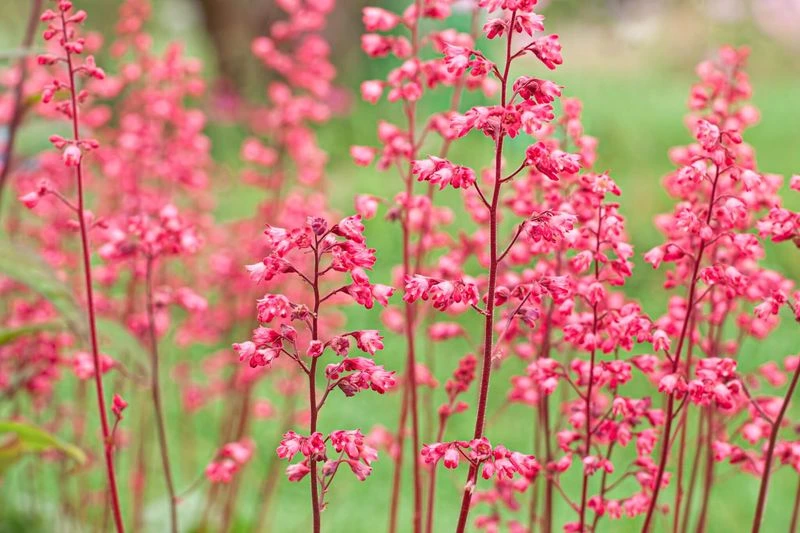
Coral Bells stand out with their vibrant foliage and delicate, bell-shaped flowers. Their colorful leaves provide year-round interest, even when peonies are not in bloom. Coral Bells’ adaptability to various conditions makes them easy to grow alongside peonies. The plant’s compact size contrasts well with the larger peony blooms. Its ability to attract pollinators adds life to the garden, ensuring a dynamic and thriving environment.
Hellebores
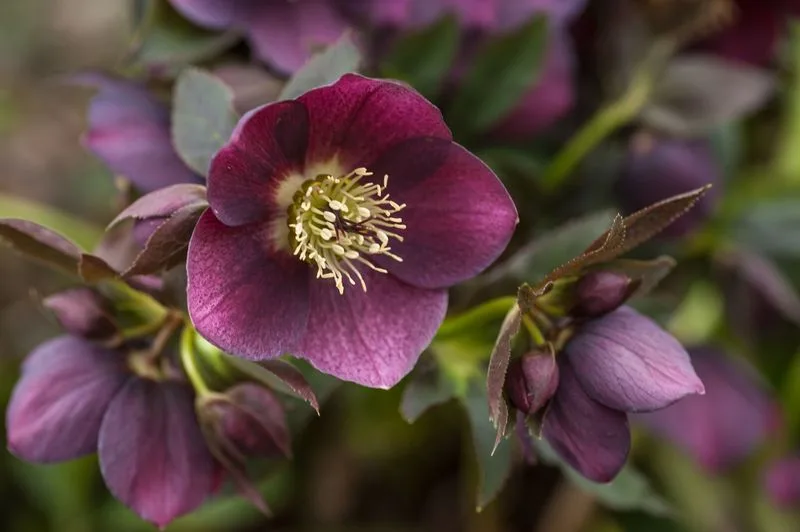
Hellebores captivate with their early blooms and nodding flowers. These perennials offer a subtle, elegant contrast to the more showy peonies. Their shade tolerance and hardy nature make them ideal for similar planting locations. Hellebores’ long-lasting flowers provide visual interest from winter into spring. Their understated beauty complements peonies, creating a well-rounded and enchanting garden space that thrives in cooler months.
Brunnera
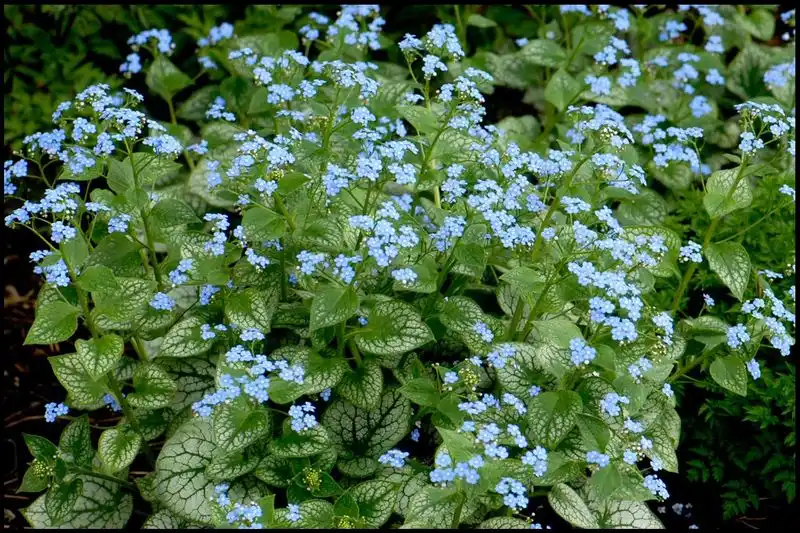
Brunnera, often called “false forget-me-not,” charms with its delicate blue flowers and heart-shaped leaves. The silvery foliage adds a cool, calming effect, contrasting with peonies’ vibrant blooms. Brunnera thrives in shaded, moist conditions, making it an excellent companion for peonies. Its long-lasting blooms ensure a continuous splash of color. This plant’s low-maintenance nature and visual appeal make it a beloved choice for enhancing garden aesthetics.
Pulmonaria
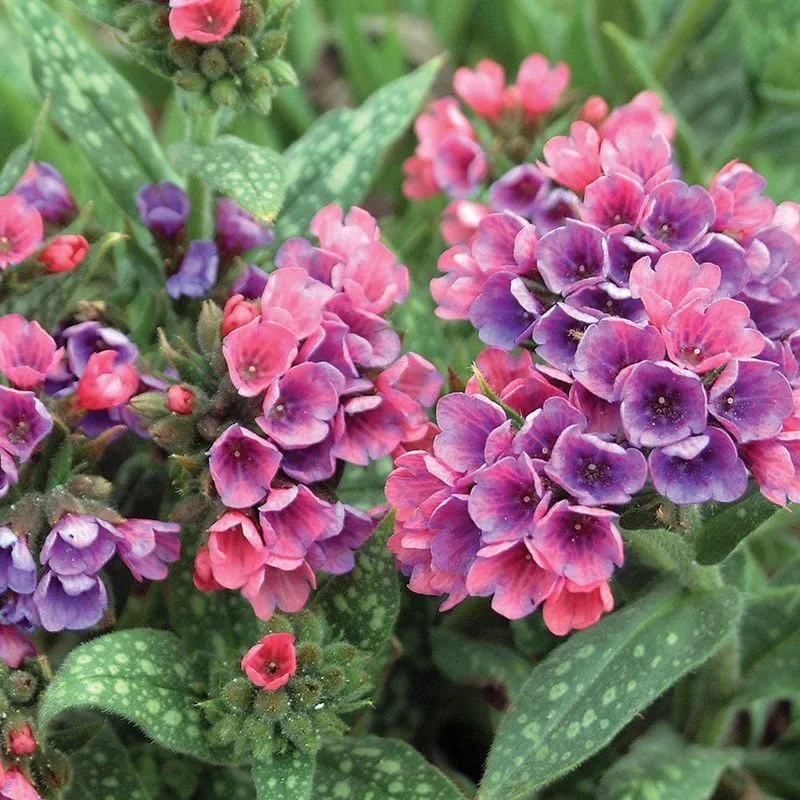
Pulmonaria, or lungwort, offers unique, spotted foliage and clusters of pink and blue flowers. Its colorful presence is a perfect match for peonies, adding variety and intrigue. Pulmonaria thrives in shady, moist environments, aligning well with peonies’ needs. The plant’s early blooms ensure a vibrant garden awakening as spring begins. It’s a wonderful choice for gardeners seeking to add texture and interest to their plantings.
Campanula
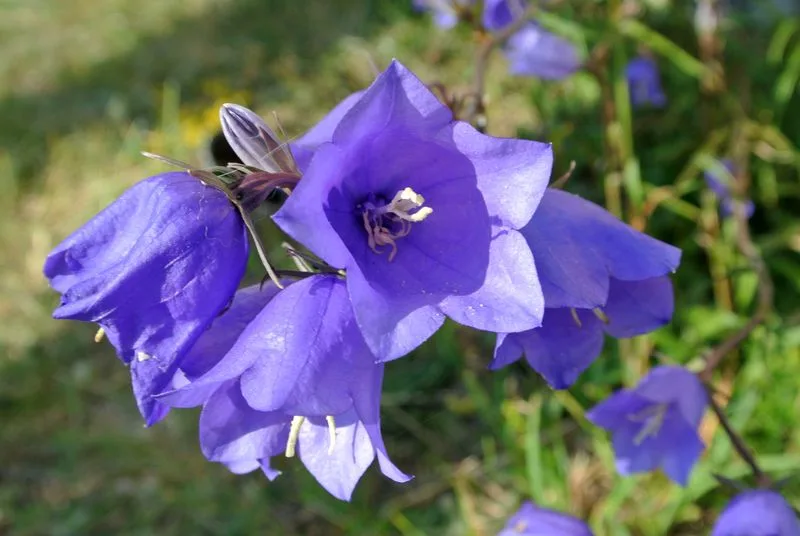
Campanula, or bellflower, enchants with its bell-shaped blooms in shades of purple and blue. These flowers add a touch of whimsy and elegance, complementing peonies’ robust nature. Campanula thrives in sun to partial shade, adapting well to various garden settings. Its blooming season extends the garden’s visual appeal well past peony season. By pairing these plants, gardeners can enjoy a harmonious and ever-changing display.
Alyssum
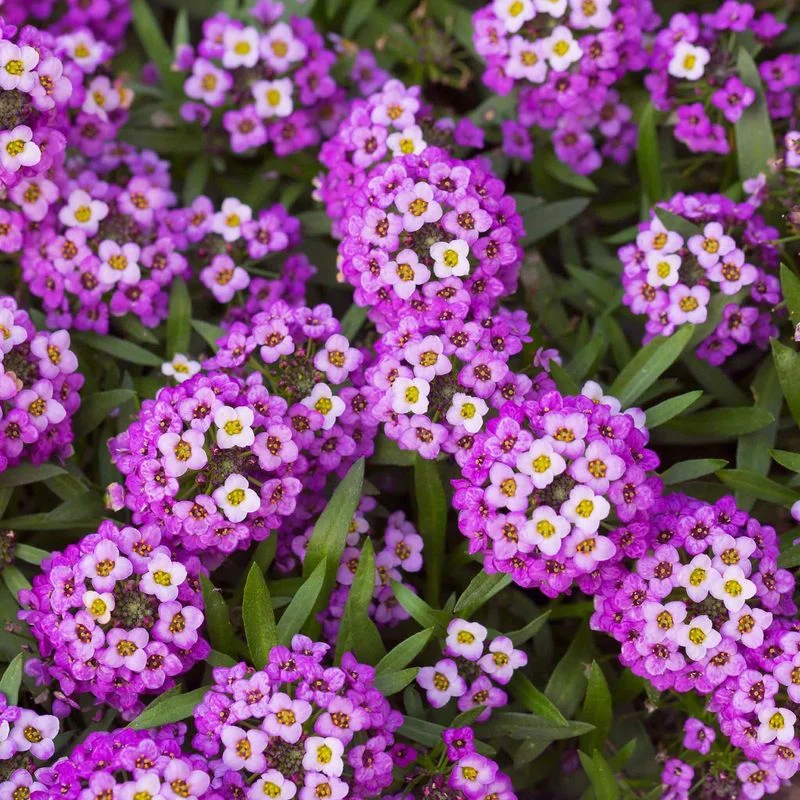
Alyssum is revered for its sweet fragrance and dense clusters of tiny, white flowers. This plant forms a low, carpet-like ground cover, perfect for filling spaces between peonies. Its honey-scented blooms attract beneficial insects, supporting the garden’s ecosystem. Alyssum thrives in a variety of conditions, ensuring versatility in garden design. Its simple beauty and practicality make it an ideal companion, enhancing both the aesthetics and health of a garden.

